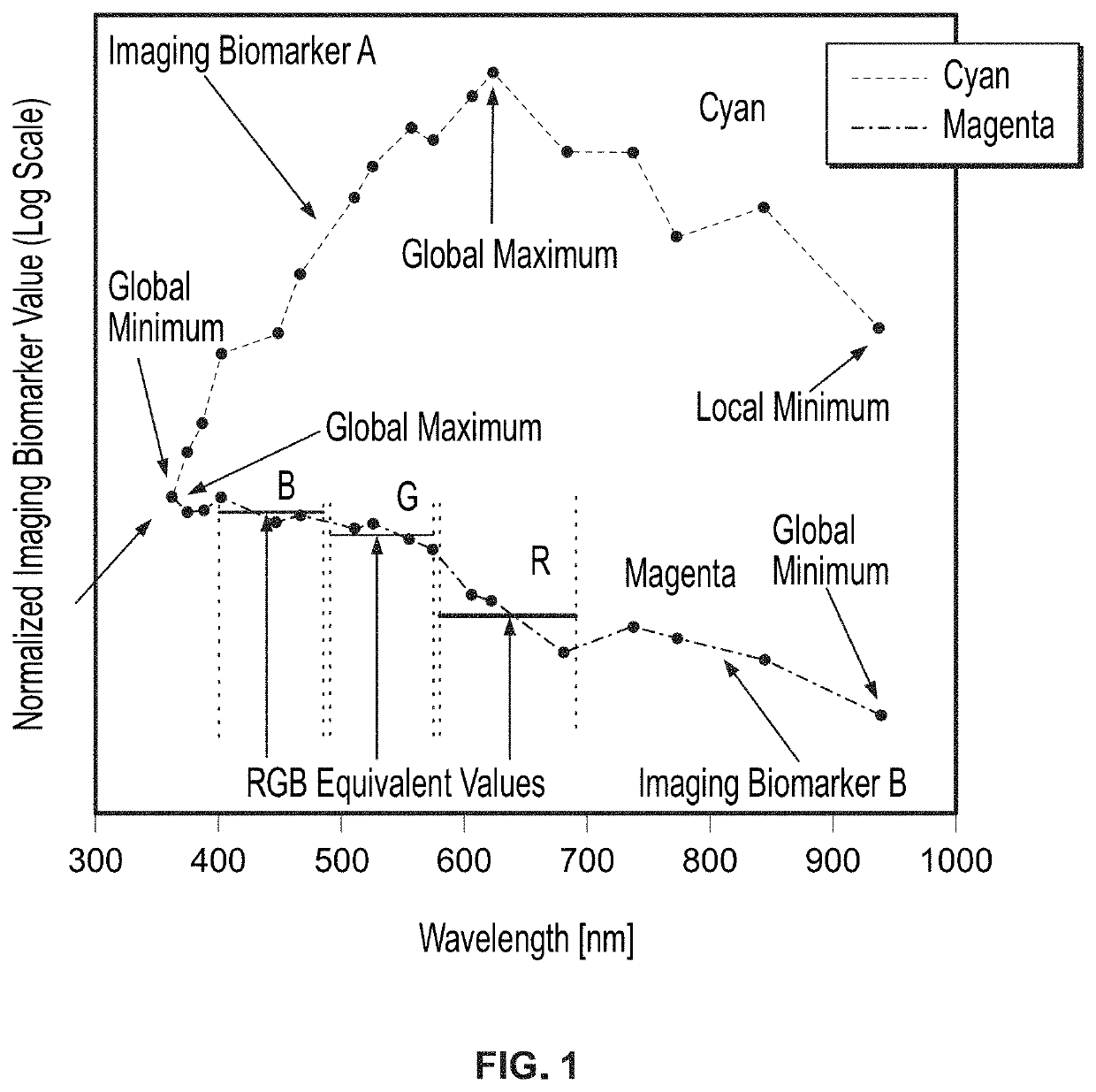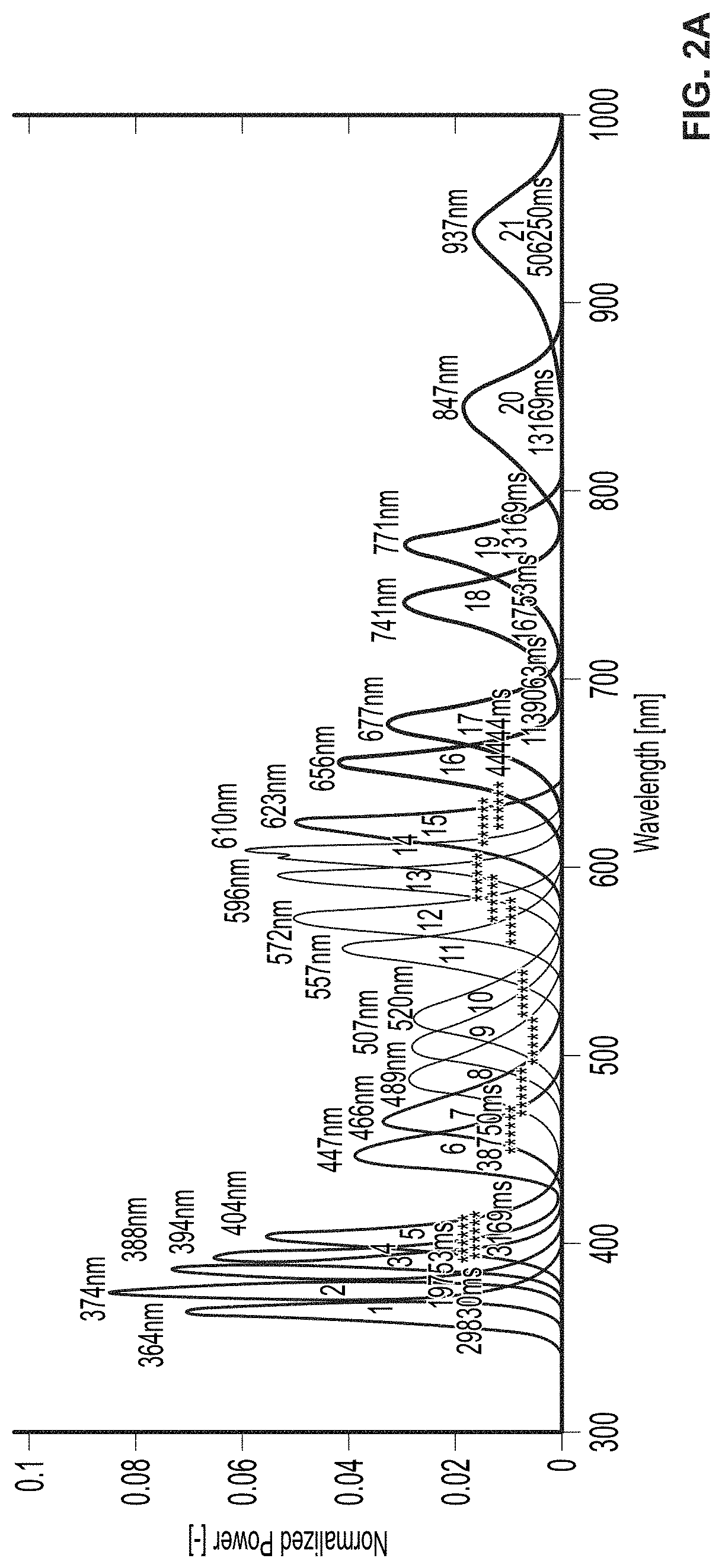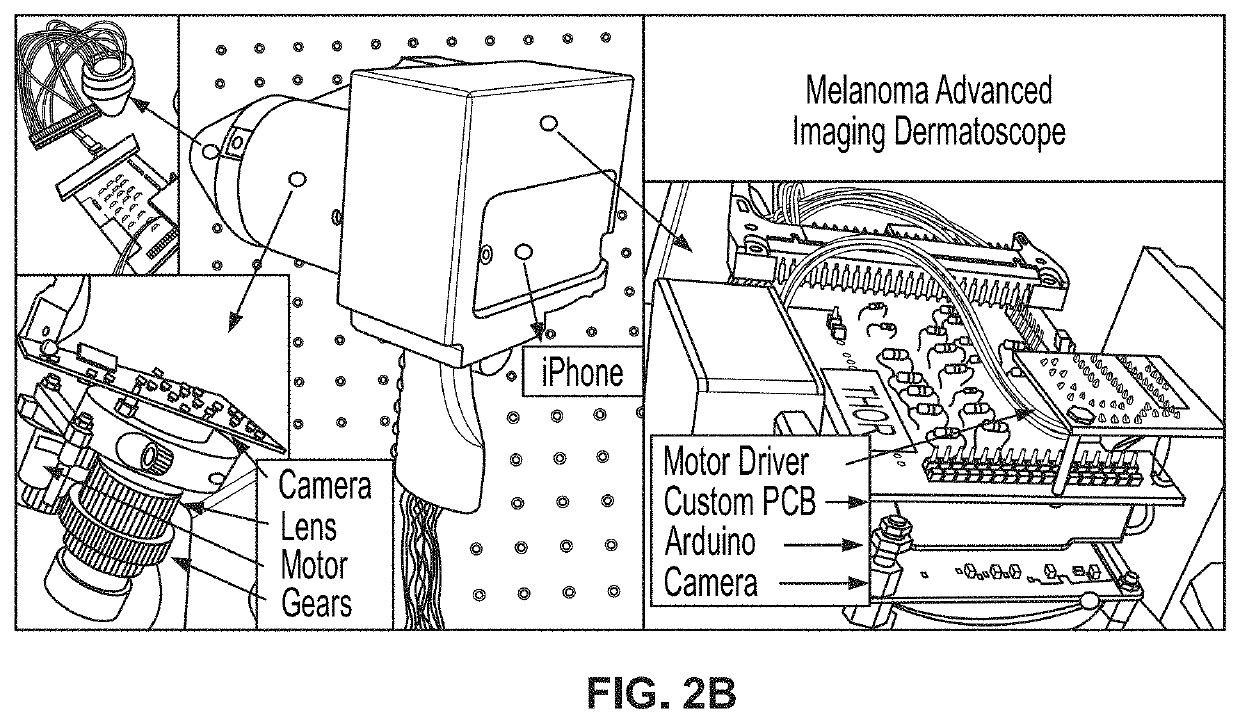Hyperspectral imaging in automated digital dermoscopy screening for melanoma
a technology of automated digital dermoscopy and melanoma, applied in the direction of image enhancement, diagnostics using spectroscopy, instruments, etc., can solve the problems of substantial number of unnecessary biopsies, inability to detect melanoma clinically, and inability to perform clinically significant melanoma detection
- Summary
- Abstract
- Description
- Claims
- Application Information
AI Technical Summary
Benefits of technology
Problems solved by technology
Method used
Image
Examples
Embodiment Construction
[0041]In the following detailed description, numerous specific details are set forth in order to provide a thorough understanding of the invention. However, it will be understood by those skilled in the art that the present invention may be practiced without these specific details. In other instances, well-known methods, procedures, and components have not been described in detail so as not to obscure the present invention.
[0042]FIG. 1 shows the spectral dependence of two imaging biomarkers on one sample lesion over the entire spectrum, as a function of wavelength, providing evidence that a machine learning algorithm utilizing a range of wavelengths may achieve higher sensitivity and specificity compared to RGB equivalent values. The two imaging biomarkers selected for analysis were the most melanoma-predictive RGB biomarkers identified in the aforesaid U.S. Patent Application Publication No. 2018 / 0235534 (i.e., “optimum imaging biomarkers”).
[0043]The optimum imaging biomarker value...
PUM
 Login to View More
Login to View More Abstract
Description
Claims
Application Information
 Login to View More
Login to View More - R&D
- Intellectual Property
- Life Sciences
- Materials
- Tech Scout
- Unparalleled Data Quality
- Higher Quality Content
- 60% Fewer Hallucinations
Browse by: Latest US Patents, China's latest patents, Technical Efficacy Thesaurus, Application Domain, Technology Topic, Popular Technical Reports.
© 2025 PatSnap. All rights reserved.Legal|Privacy policy|Modern Slavery Act Transparency Statement|Sitemap|About US| Contact US: help@patsnap.com



